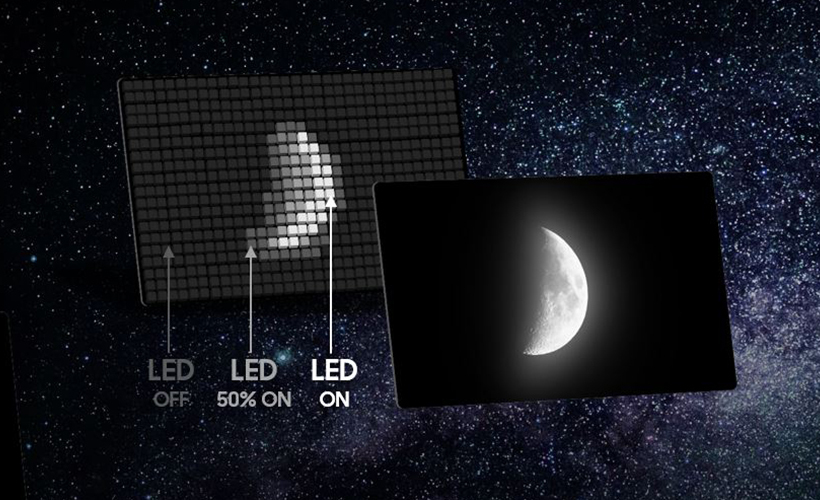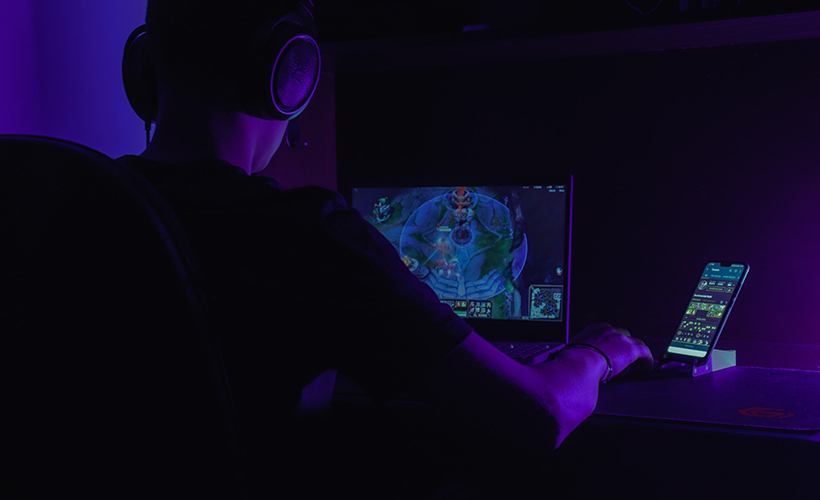
Have you heard of the term ‘Halo-Free’ displays? What does it mean and why is it important for laptop users? Find out in this article:
What is a Halo Effect?

△ Light bulbs at night with halation
Like a halo surrounding the head of a holy person, halation (also known as the halo effect) spreads soft light around bright images. It is a terminology used by photographers and filmographers to describe the blurred, ethereal ‘glow’ when bright areas bleed around the dark edges. This image effect can be seen especially in the backlit shots and night scenes of analogue black and white photography/films.
Halation in Display

△ Halation on LCDs with ‘local dimming’
While some photographers and filmographers enjoy the glowy effect, halation can be an unwanted issue among others. In the film industry, anti-halation backing became a standard practice to prevent light bleeding into other areas.
LCD panel depends on backlighting, which means that there’s an additional layer behind the display panel responsible for illumination: Without a backlighting panel, there’s no lighting. However, when you have a backlighting panel illuminating constant light, you experience unwanted halation, so LCD panels struggle to keep panels ‘Halo-Free’.
Why You Want a Halo-Free Display

What are the benefits of successfully removing halation from your laptop screens, making it ‘Halo-Free’? Here are three scenarios for you to imagine:
(1) You’re playing a first-person shooter (FPS) game online where quickly searching and aiming at enemies is part of your winning strategy. You walk into a dark alley, only to be blinded by glowy street lights before your well-hidden targets spot you first and shoot you down.
(2) You’re a movie director who shot a special scene meticulously without halation in mind but feel disappointed when you realize what you intended will not be communicated across the screen as people watch your movie on their laptops with light bleeding into unintended areas.
(3) There are 101 different shades of gray according to X Window System's definition of gray, and you are a digital artist trying to showcase them in your artwork. Unfortunately, halation causes light blurring, so some shades of gray are not illustrated properly on screen.
Samsung Display’s OLED display for laptops received ‘Halo Free’ verification from the global safety science leader, UL, for its glare-free and sharp picture quality in April 2022. Unlike LCDs, OLEDs do not depend on backlighting as each pixel is capable of turning light on and off independently (hence the term ‘organic light-emitting diodes’).
Samsung Display’s OLED display for laptops show a halation of 0.00% and no indication of light blurring.
In summary, ‘Halo-Free’ displays mean a better contrast ratio for your screen with true blacks and brightest lights: This is why you will want one on your next laptop, and Samsung Display will continue to deliver the best OLED experience for you!

